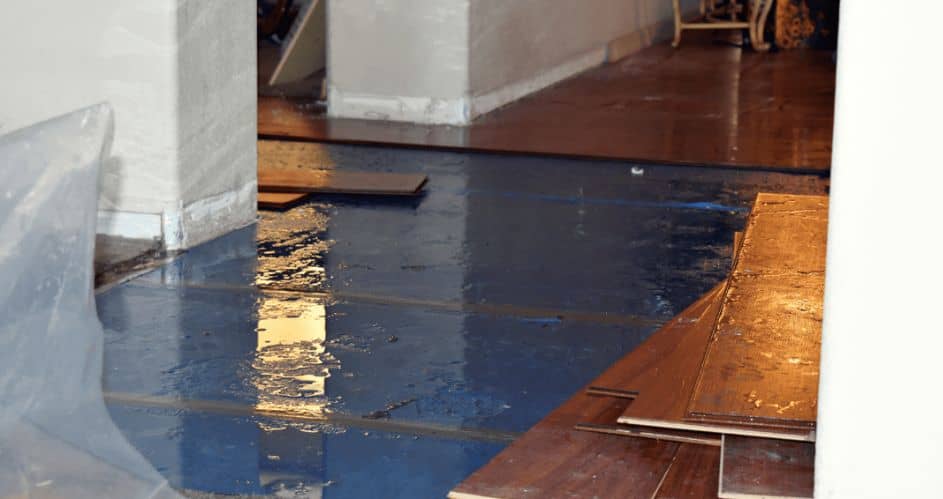
Water damage can strike unexpectedly, wreaking havoc on your property and belongings. Whether it’s from a burst pipe, flooding, or a leaking roof, comprehending what to do immediately after water damage occurs is paramount to minimize the extent of the injury and ensure a smoother recovery process.
We’ll explore the steps you should take in the critical hours following water damage to shield your home, health, and belongings.
Steps you should take after water damage
Assess the Safety of Your Environment
The first and most paramount step after experiencing water damage is ensuring your safety and your family’s. Before entering the affected area, you must evaluate the risks linked with the water damage.
If there’s any doubt about your home’s structural integrity or electrical hazards, waiting for professionals to give the all-clear is imperative.
Once you’re sure it’s safe to enter, turn off the main power supply to your home to stem electrical accidents. Further, ensure that gas lines are turned off if you smell gas, and bypass using any electrical appliances in the affected area.
Stop the Source of Water
To stem further damage, it’s essential to locate and stop the source of the water intrusion. This might involve shutting off the main water supply to your home or fixing a broken pipe or valve. Identifying and addressing the water source quickly can significantly reduce the extent of the damage.
If the water damage results from flooding from external sources, such as heavy rain or a natural disaster, you might not be able to stop the source immediately. In such cases, focus on mitigating the damage internally while waiting for the external water source to recede.
Document the Damage
Before you begin any cleanup or removal of water-damaged items, thoroughly document the extent of the damage. Use your smartphone or camera to take clear photographs or videos of the affected areas. This documentation will be invaluable when filing insurance claims and may help speed up the claims process.
Make a detailed list of damaged items, including their approximate value, age, and any relevant purchase receipts. Insurance adjusters will depend on this information to assess your claim accurately. Keep all documents and photographs in a safe, dry place to ensure they’re readily available when required.
Contact Your Insurance Provider
Once you’ve documented the damage, it’s time to contact your insurance company. Notify them about the water damage and provide all the necessary information, including your collected documentation. Be prepared to answer questions about the cause of the damage and its extent.
Your insurance provider will usher you on the next steps, including the claims process and any immediate actions they may require. Follow their instructions closely to ensure your claim is processed smoothly.
Remove Standing Water
The longer water sits in your home, the more extensive the damage can become. Water can seep into walls, floors, and ceilings, ushering structural damage and mold growth. Therefore, it’s crucial to begin the water removal process promptly.
You can use various methods to remove standing water, such as wet-dry vacuums, pumps, or even buckets and towels for smaller areas. If the water damage is extensive, hiring professionals with specialized equipment for efficient water extraction is advisable.
Protect Your Belongings
While focusing on drying out the affected area, it’s paramount to protect your belongings from further damage. Clear items that can be salvaged and place them in a dry, safe location.
This includes furniture, electronics, clothing, and important documents. For items that have been soaked, assess whether they can be cleaned, dried, and saved.
It’s paramount to act quickly with items like photographs, important documents, and sentimental belongings. Confer with restoration professionals if you need help with the best approach for specific items.
Dispose of Damaged Items
Unfortunately, not all items affected by water damage can be salvaged. Items extensively damaged or contaminated by sewage or hazardous materials should be properly disposed of to sidestep health risks.
Follow local guidelines and regulations for disposing of such items, and consider wearing protective gear when handling them. Dispose of damaged materials responsibly, whether it’s through your local waste disposal service or a designated hazardous waste facility.
Keep records of disposal to provide documentation for insurance claims.
Experiencing water damage can be stressful and overwhelming, but taking immediate action is crucial to minimize its impact.
By following the steps outlined—assessing safety, stopping the source of water, documenting damage, contacting your insurance provider, removing water, drying out the affected area, protecting your belongings, preventing mold growth, disposing of damaged items, and scheduling comprehensive water damage restoration services in Idaho—you can increase your chances of a successful recovery.
Remember that time is of the essence when dealing with water damage. The quicker you act, the better the outcome is likely to be. Additionally, consider implementing preventive measures, such as regular maintenance and inspections, to reduce the risk of future water damage to your home.